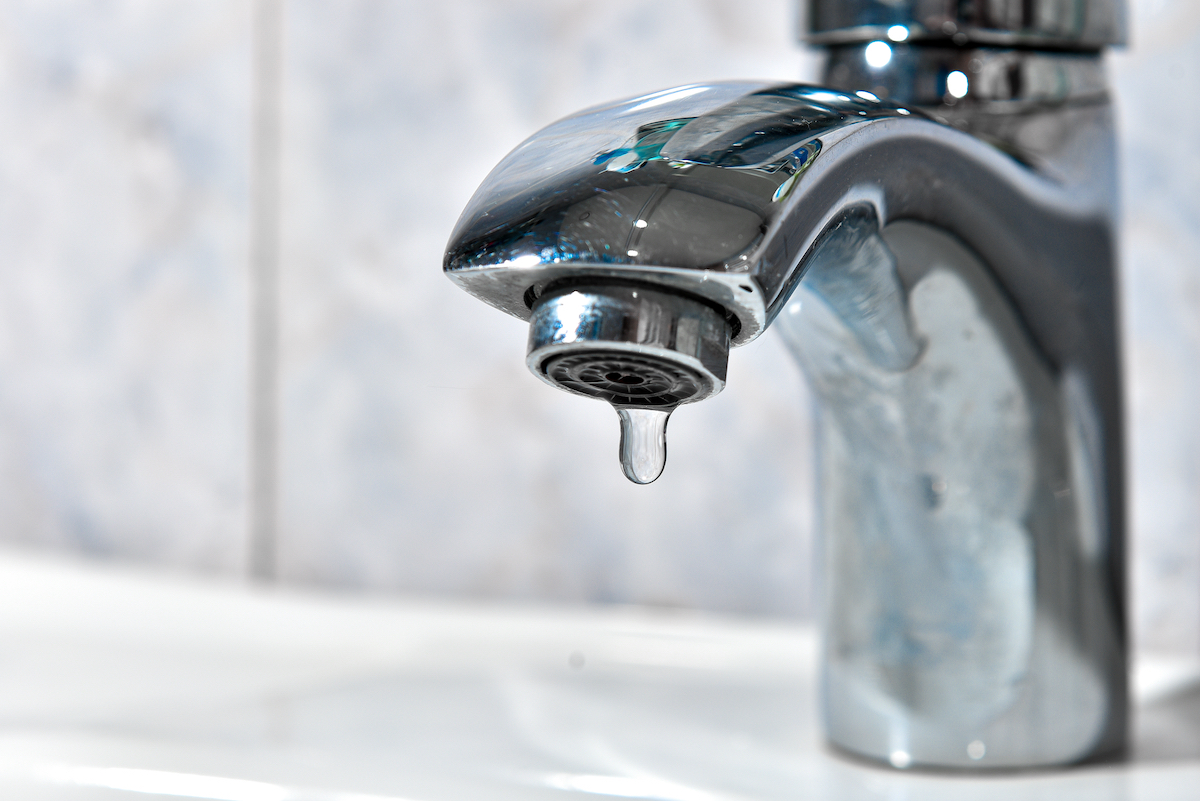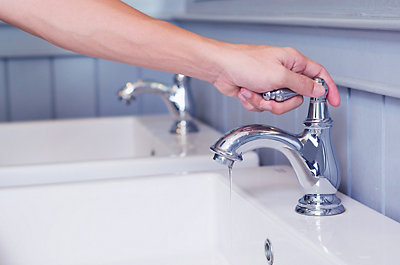Motives Why It's Essential to Fix a Dripping Faucet
Motives Why It's Essential to Fix a Dripping Faucet
Blog Article
We have encountered this great article on Why Is It Important To Fix Your Leaking Tap/Faucet? directly below on the internet and thought it made good sense to discuss it with you in this article.

Dripping faucets could appear like a minor aggravation, but their influence exceeds simply the inconvenience of the noise. From drainage to sustaining unnecessary monetary prices and health and wellness risks, disregarding a trickling faucet can lead to different consequences. In this short article, we'll delve into why it's crucial to resolve this typical household concern quickly and efficiently.
Wastefulness of Water
Environmental Impact
Leaking faucets add substantially to water wastage. According to the Environmental Protection Agency (EPA), a single tap trickling at one drip per secondly can lose greater than 3,000 gallons of water per year. This not just strains water sources yet likewise influences ecological communities and wild animals based on them.
Step-by-Step Overview to Dealing With a Dripping Tap
Devices Called for
Prior to trying to deal with a trickling tap, gather the necessary tools, consisting of a flexible wrench, screwdrivers, replacement parts (such as washers or cartridges), and plumber's tape.
Typical Tap Issues and Their Solutions
Recognize the type of faucet and the certain concern creating the drip. Usual problems include worn-out washers, corroded valve seats, or defective O-rings. Refer to maker guidelines or on-line tutorials for detailed advice on repairs.
Financial Costs
Enhanced Water Expenses
Beyond the environmental effect, leaking taps can blow up water costs substantially. The accumulated wastage with time translates into higher utility expenditures, which might have been prevented with timely repair work.
Potential Building Damages
Additionally, extended dripping can result in damage to components and surface areas bordering the faucet. Water accumulation can trigger discoloration, corrosion, and even architectural issues if left neglected, causing extra repair work expenses.
Health and wellness Problems
Mold and Mildew Growth
The constant existence of dampness from a trickling faucet develops a suitable environment for mold and mildew development. These fungis not just jeopardize interior air high quality however likewise present health and wellness dangers, especially for people with respiratory system conditions or allergic reactions.
Waterborne Conditions
Stationary water in dripping taps can come to be a breeding ground for microorganisms and various other microorganisms, enhancing the risk of waterborne illness. Contaminants such as Legionella bacteria flourish in stagnant water, possibly leading to major ailments when consumed or inhaled.
Do it yourself vs. Professional Repair
Benefits and drawbacks of Do It Yourself Repair Service
While some may attempt to take care of a dripping tap themselves, DIY repairs come with their very own set of challenges. Without proper understanding and tools, do it yourself attempts can aggravate the issue or result in incomplete repair services, extending the problem.
Benefits of Hiring a Specialist Plumber
Employing a professional plumber makes sure that the underlying root cause of the trickling faucet is resolved properly. Plumbing professionals possess the competence and devices to identify and repair tap problems efficiently, conserving time and reducing the danger of additional damage.
Ecological Responsibility
Private Payment to Conservation
Taking obligation for dealing with leaking taps lines up with wider efforts towards water preservation and ecological sustainability. Every person's actions collectively make a substantial impact on maintaining valuable resources.
Lasting Living Practices
By focusing on prompt repair services and adopting water-saving behaviors, individuals contribute to lasting living methods that profit both existing and future generations.
Safety nets
Regular Upkeep Tips
To stop leaking taps, perform routine upkeep such as cleansing aerators, checking for leaks, and changing damaged components without delay. In addition, think about setting up water-saving gadgets or upgrading to a lot more reliable components.
Importance of Prompt Fixes
Addressing trickling taps as quickly as they're seen protects against more water wastefulness and potential damages, eventually saving both water and cash in the long run.
Impact on Building Worth
Assumption of Well-Maintained Property
Keeping a building in good condition, consisting of resolving upkeep issues like dripping faucets, enhances its perceived value and desirability among possible purchasers or renters.
Influence on Resale Value
Residences with well-maintained plumbing fixtures, including taps, command higher resale values in the real estate market. Resolving dripping faucets can add to a favorable perception during residential or commercial property assessments and arrangements.
Final thought
Resolving a dripping faucet exceeds simple ease; it's a vital step towards saving water, decreasing financial costs, and securing health and residential or commercial property. Whether through DIY repair services or expert assistance, taking action to deal with dripping taps is a small yet impactful method to advertise responsible stewardship of sources and add to a healthier, more sustainable future.
How to Fix a Dripping or Leaky Faucet
A leaking faucet is one of the most common problems that homeowners encounter, but it being commonplace doesn’t make it any less annoying. The constant drip drip drip of a leaking bathtub faucet, showerhead, or sink tap can disturb your home’s serenity. Left neglected, a dripping faucet can also result in higher water bills and discoloration or mold growth in your sink or plumbing fixtures.
Fortunately, you don’t have to be a trained plumber to know how to stop a dripping faucet. With some basic tools, replacement parts, and a little patience, leaky faucet repair is a breeze. In this article, we’ll explain what causes dripping faucets and how you can fix them.
What Causes a Leaking Faucet?
Kitchen and bathroom faucets come in all manner of designs, but most involve some combination of valves, O-rings, seals, and washers. The O-ring is usually the weakest link, but any one of these pieces can wear down over time. Heat, moisture, temperature fluctuations, minerals, mold, and movement can contribute to warping and corrosion, breaking the watertight seal. This just comes with the territory of being a homeowner. Everything is always subject to wear and tear, and some component parts of your appliances and fixtures need to be replaced on occasion. At least replacement O-rings are cheap!
More rarely, dripping faucets can be a symptom of excessively high water pressure. Were this the case in your home, you would probably notice that the leak is not isolated to one faucet. Water pressure issues are harder to resolve on your own. We recommend contacting a professional plumber if you suspect your water pressure is too high.
How to Fix a Dripping Faucet
Pipe wrench or monkey wrench Allen wrench set Screwdrivers Old towel or rag Shut off the water.
Before you do anything, you need to turn off the water to keep from drenching your kitchen or bathroom. You should find a valve under the sink and against the wall. Once you’ve turned this valve, try turning the faucet on to confirm that the water source has been cut off.
If you can’t locate your local valve for the faucet you’re working on, you can always shut off the water to the house at the main valve. Of course, this will prohibit anyone from using the sinks, showers, or toilets while you’re working on the faucet that’s giving you trouble.
Plug or block the drain.
You’ll be disassembling the faucet and removing some small bits of hardware. Plug the drain with a stopper or rag to avoid the possibility of a small screw falling into your P-trap.
Take apart the faucet assembly.
There are several varieties of kitchen and bathroom faucets, each with its own manner of assembly. For detailed instructions on how to disassemble your faucet, you can refer to the fixture’s manual or contact the manufacturer. If you know whether you have a ball, disc, cartridge, or compression faucet, you can find detailed schematics online.
In general, you need to begin by removing the faucet handles. You might notice a small screw that you’ll need to remove with a screwdriver or Allen wrench. If you don’t see any visible securing hardware, it’s likely hidden under a decorative cap that can be unscrewed or popped off with flathead screwdriver.
Remove each piece methodically, consulting a schematic when necessary. Take notes or arrange the pieces in such a way to make it easier to correctly reassemble the faucet later.
Remove the cartridge.
Once you’ve removed the handles and securing hardware, you should be able to remove the valve cartridge or stem. Some cartridges will slide right out. Other faucet models will require you to loosen a nut with a pipe wrench before you can remove the valve stem.
Examine the exposed hardware.
With the cartridge or stem removed, inspect the component parts. Check the rubber O-rings for wear and tear. Also examine the seat washer for corrosion or other damage. These pieces are usually the responsible parties for a dripping faucet, but it’s worth inspecting the other component parts while you have the faucet disassembled.
Find replacement parts.
Once you’ve identified which faucet component has failed, find an identical replacement. Your local hardware store should have O-rings, seat washers, and other standard components in stock. If you have a luxury or uncommon faucet, you may have to contact the manufacturer for a replacement part.
It’s a good idea to take your old parts with you to the hardware store so you can compare them with the store’s inventory and be sure you’re purchasing the correct replacement.
Reassemble the faucet.
With your new parts in hand, reconstruct the faucet and handles. Don’t be tempted to overtighten screws or nuts. You might think this could create a better seal, but it can instead damage or bend a delicate part of the assembly and create a new problem for you.
Turn on the water and test the faucet.
The only thing left to do is test your work. Unplug the sink, turn the water back on, and try the faucet. Congratulate yourself on a job well done!
https://www.libertyhomeguard.com/how-to-fix-a-dripping-or-leaky-faucet/

We were made aware of that write-up on Why It's Important to Fix Leaky Faucets from a good friend on another website. Sharing is good. You never know, you could be doing someone a favor. Many thanks for being here. Please check up our blog back soon.
Report this page